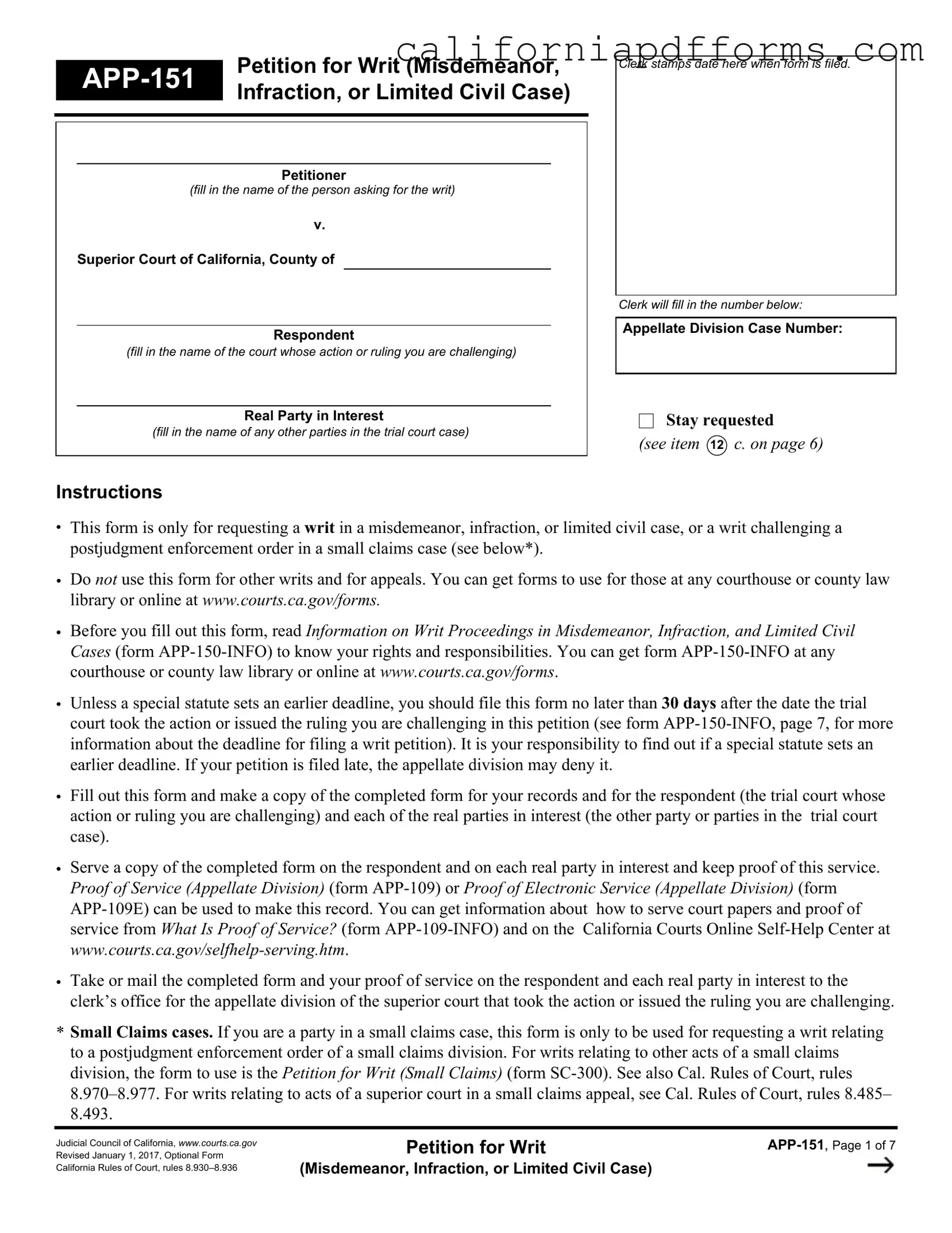The California App 151 form, also known as the Petition for Writ, is specifically designed for individuals seeking to challenge an action or ruling made by a trial court in misdemeanor, infraction, or limited civil cases. This form can also be used for small claims cases that involve postjudgment enforcement orders. It is important to note that this form is not suitable for other types of writs or appeals.
Any individual who has been a party in a trial court case or who will be directly affected by the trial court's ruling can file the App 151 form. This includes both self-represented individuals and those who have legal representation. If you are not a party in the original case but believe the ruling will negatively impact you, you may still have grounds to file.
The form must generally be filed within 30 days of the trial court's action or ruling that you are challenging. If you miss this deadline, the appellate division may deny your petition. In some cases, special statutes might set an earlier deadline, so it's crucial to verify this before filing.
When completing the App 151 form, you need to provide:
-
Your information, including your name, address, and contact details.
-
The details of the trial court action or ruling you are challenging.
-
The names of other parties involved in the original case.
-
A description of the legal errors you believe the trial court made.
-
Your request for the appellate division, specifying what you want the court to order or refrain from doing.
Be sure to make copies of the completed form for your records and for the other parties involved.
After completing the form, you must serve a copy on the respondent (the trial court) and each real party in interest (the other parties involved in the case). You can use Proof of Service forms to document this process. Keeping proof of service is essential, as it demonstrates that all necessary parties have been notified of your petition.
You should file the completed App 151 form along with your proof of service at the clerk's office for the appellate division of the superior court that made the ruling you are challenging. This ensures that your petition is formally recognized and processed by the appropriate court.
